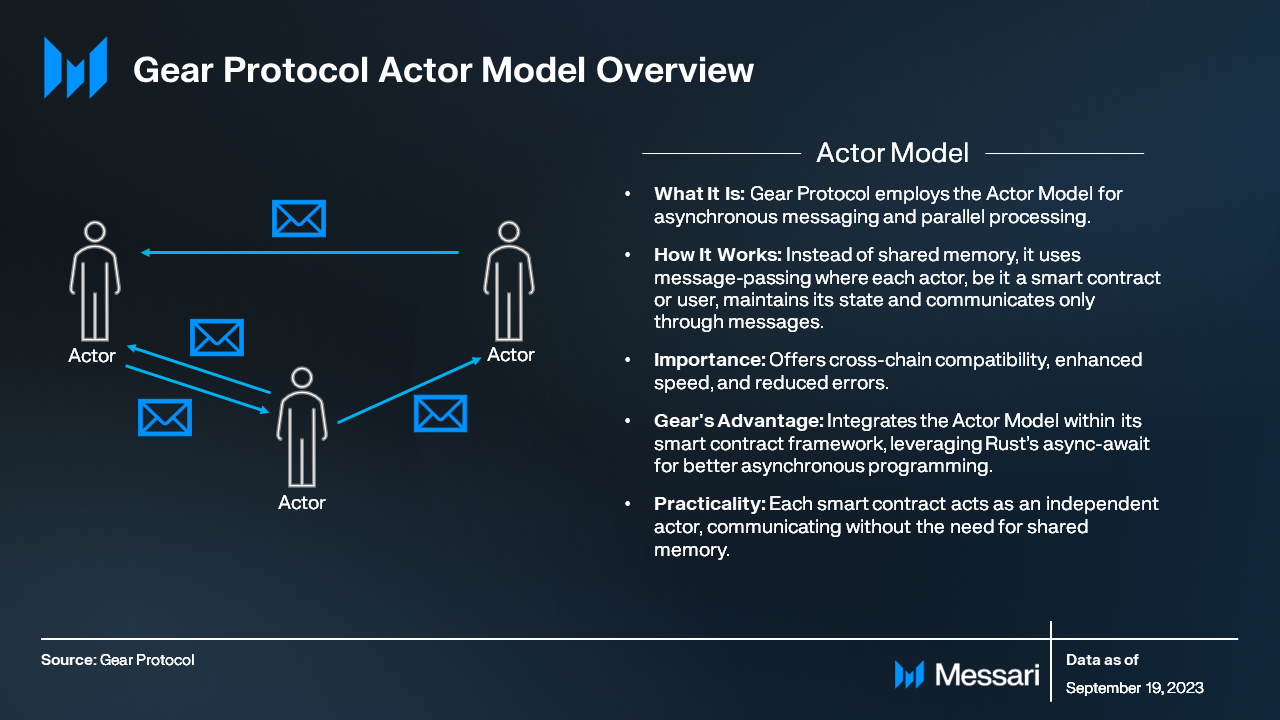Welcome to the Web3 world, where digital finance and applications are showcased in a revolutionary way through the fusion of blockchain technology, cryptocurrencies, and a pioneering spirit. Are you overwhelmed by the wealth of terms in the Web3 world that you don’t understand? Are those slang barriers preventing you from learning about Web3? Don’t worry! We’re here to explain the obscure terms to guide your learning. Today, we're diving into an innovative development in the world of Web3: [Gear Network State].
The Gear Network is an advanced blockchain system designed to maintain a distributed state, leveraging the power of WebAssembly (Wasm) for runtime code. It stands out due to its capability for forkless runtime upgrades, ensuring that the state is finalized when a finality gadget is employed. This network is composed of various essential components that work together to ensure efficient and secure operations.
Programs are integral to the Gear network, functioning as immutable Wasm blobs with a fixed memory allocation that persists across message handling. This memory is exclusively reserved for each program during initialization, with additional memory available from the Gear instance’s memory pool for a gas fee. This structure ensures that each program operates within its own memory space, maintaining data integrity and security. The Gear network uses a global message queue to handle transactions. Users can send transactions containing one or more messages to specific programs. These messages fill the queue and are processed during block construction, ensuring efficient and orderly transaction handling.
To protect against DOS attacks, the Gear network requires gas fees for transaction processing. It features a balance module for storing user and program balances and managing transaction fees. This balance module is essential for maintaining the security and integrity of the network, especially in public, permissionless scenarios.
The Gear network's core functions revolve around its state components:
●Programs: Serve as the backbone of the network, executing code and maintaining memory.
●Memory: Provides isolated and persistent memory spaces for each program.
●Message Queue: Manages and routes transactions efficiently.
●Accounts: Ensures secure and fair transaction processing with gas fees.
Gear Network State has several practical applications within the Web3 ecosystem:
2.Smart Contracts: Developers can deploy smart contracts with enhanced performance and security. 3.Finance: Gear’s efficient transaction handling makes it ideal for decentralized finance (DeFi) applications.
4.Gaming: The network’s ability to manage state and transactions is beneficial for blockchain-based gaming.
Importance in the Web3 Ecosystem
The Gear Network State is a critical player in the Web3 ecosystem, providing a robust and flexible platform for developing decentralized applications. Its forkless upgrades, efficient state management, and secure transaction handling make it a valuable asset for developers and users alike. By enabling more complex and reliable dApps, Gear contributes significantly to the advancement of Web3 technologies.
User Experience and Innovations
Gear Network prioritizes user experience by offering a seamless environment for program execution and memory management. Innovations such as forkless runtime upgrades and efficient memory allocation enhance performance and reliability, making it easier for developers to create and maintain applications. This focus on usability and innovation helps Gear stand out in the competitive Web3 landscape.
Despite its advantages, the Gear Network faces several challenges:
●Scalability: As with any blockchain system, ensuring scalability while maintaining performance can be challenging. ●Security: Protecting against attacks and ensuring the integrity of the network requires constant vigilance and innovation.
●Adoption: Gaining widespread adoption in a rapidly evolving space can be difficult, especially with competing technologies.
The Gear Network State is an innovative and essential component of the Web3 ecosystem, offering a powerful platform for developing and managing decentralized applications. Its unique features, such as forkless runtime upgrades and efficient memory management, make it a valuable asset for developers and users. As the Web3 landscape continues to evolve, Gear is poised to play a crucial role in shaping the future of digital finance and decentralized applications.
By understanding the Gear Network State, you can better appreciate the complexities and potential of Web3 technologies. Stay tuned for more insights and explanations as we continue to explore the exciting world of blockchain and cryptocurrency.


